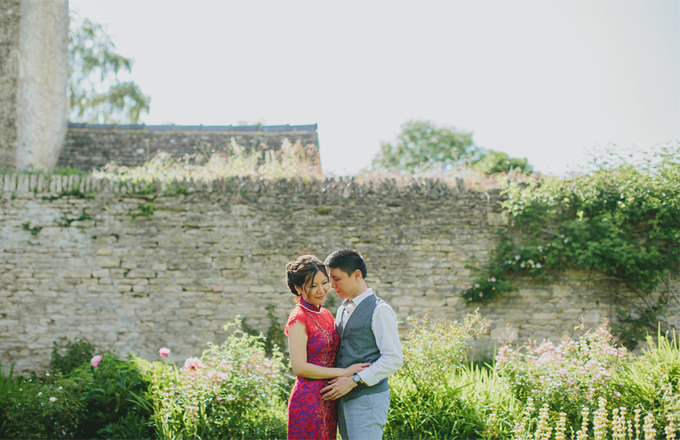
In starting to plan for a wedding, couples may desire to honour their own culture. Whether you were heavily influenced by your own culture when growing up or have always wanted a culturally-focused wedding, the decision to incorporate your culture might be a simple one. On the other hand, you prefer to include only specific aspects of your own culture, while excluding others. The great thing about this decision is that it’s your wedding – you get to decide how much or how little you want your wedding to be influenced by your culture.
The first in this blog series will highlight the unique characteristics of Chinese weddings. Traditionally, Chinese weddings are very elaborate and include several major elements including, but not limited to: wedding date fixing, wedding door games, tea ceremony, and the formal wedding ceremony and reception.
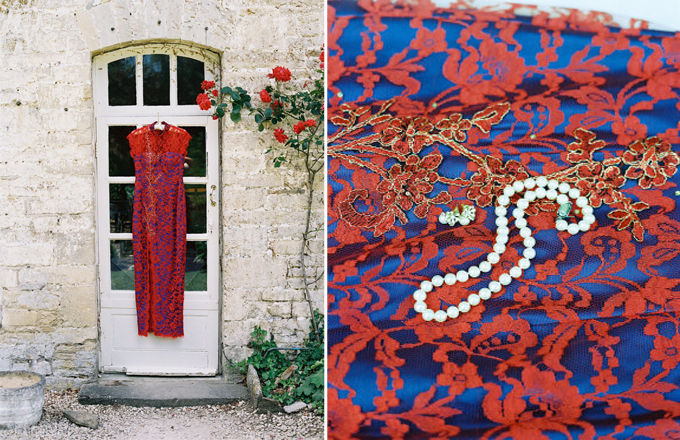
Wedding Date Fixing
The Chinese are superstitious by culture, and when thinking of a wedding date, the Chinese lunar calendar is consulted in order to choose a “lucky” day. Typically, the couples’ Chinese zodiac signs will also be taken into consideration in the choice of a wedding date.
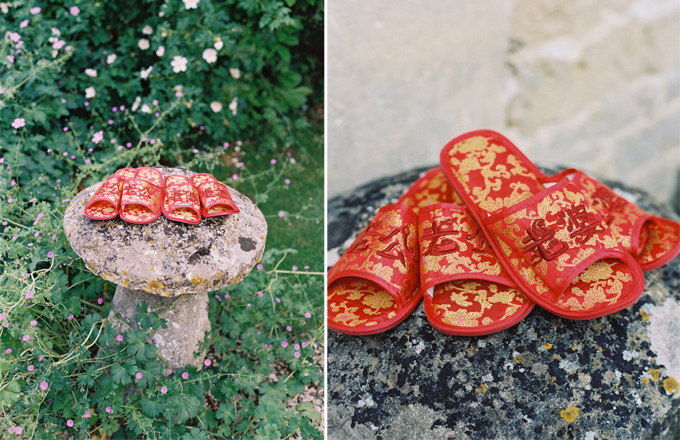
Wedding Door Games
Wedding door games usually occur at the start of the wedding day – they’re a great way to start off the day in a fun and light-hearted way! The groom and his groomsmen arrive at the bride’s family home and proceed to complete a series of tasks (set out by the bridesmaids). The groom and his friends do these tasks in order to gain passage into the house and in to see his bride, while the bride is kept hidden inside the house awaiting her groom’s successful entrance. For some ideas on what games to play, click here.
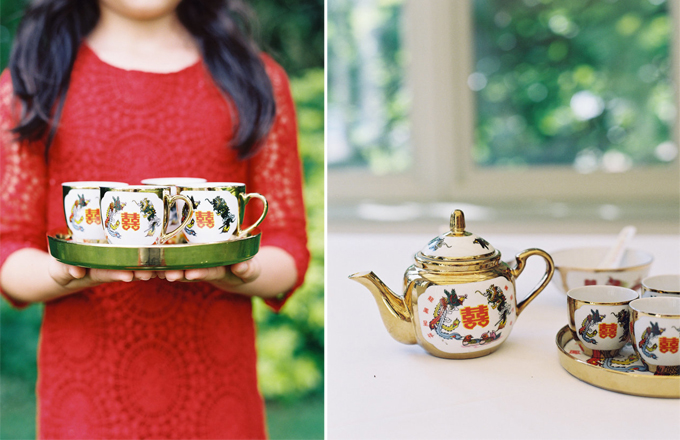
Tea Ceremony
The tea ceremony also occurs the day of the wedding and can either take place at the bride’s home, at the groom’s home, or at both the bride and groom’s separate homes. Historically, the bride would have served tea to her own family privately the morning of the wedding, while the couple would serve tea to the groom’s family after the exchange of vows (after the wedding ceremony). In this modern time, you may choose to have both families (bride and groom’s family) present at one tea ceremony in one house, thus, saving you the travel time between the different houses.
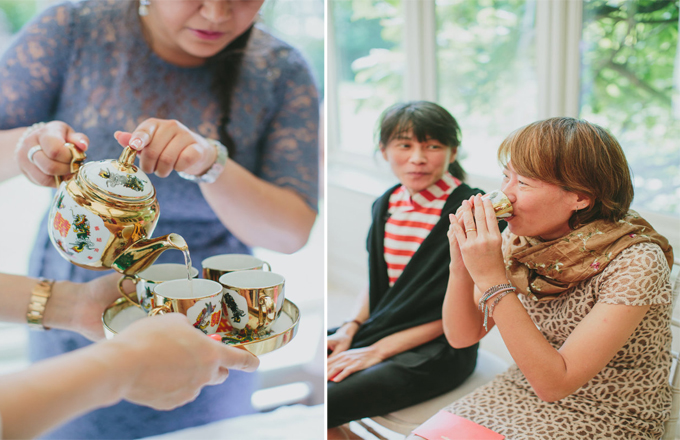
The purpose of the tea ceremony is to show respect to the couple’s families. The order of service is usually parents first, grandparents, grand-uncles and grand-aunties, uncles and aunties, elder brothers and sisters, and then elder cousins. Traditionally, the bride and groom serve the tea to their relatives while kneeling; however, modern families may simply require the couple to bow while serving the tea. In exchange for serving the tea, the couple receives red packets (with money in them) and marriage advice in return.
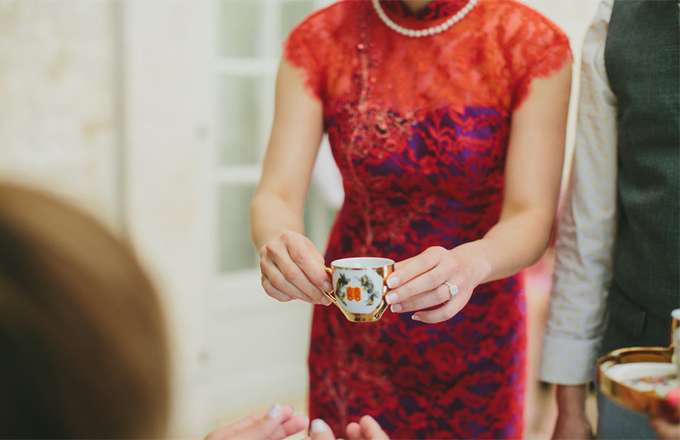
In terms of attire, bride and groom are required to wear red silk during the tea ceremony; however, these days, the bride is able to wear a traditional Chinese red dress, while the groom can wear his wedding suit.
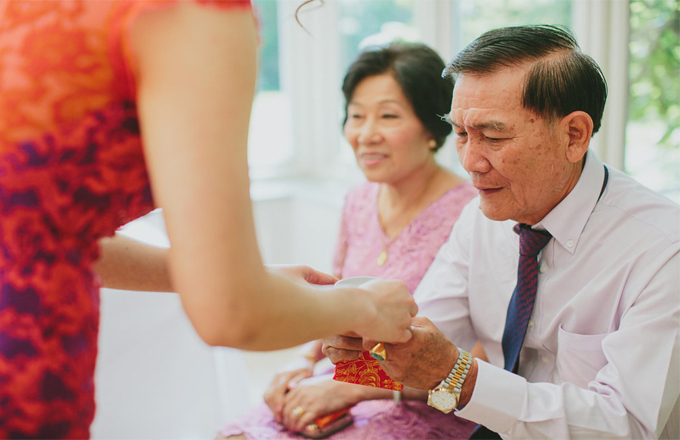
Formal Ceremony and Reception
After all pre-wedding ceremony activities have taken place, it is then time for the wedding ceremony! The ceremony usually includes the exchange of vows and rings and will vary depending on the couple’s religious affiliations.
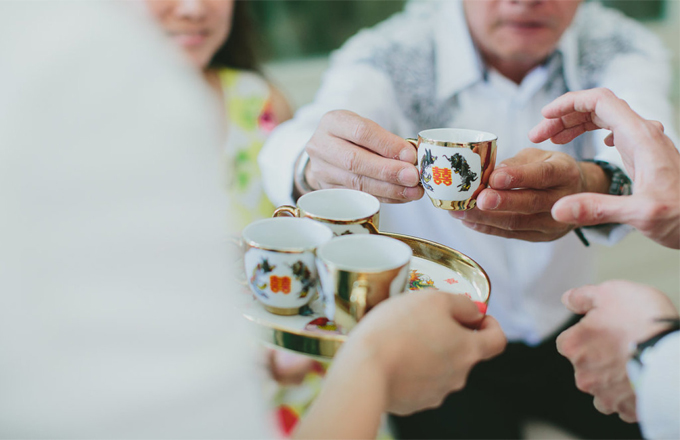
Then comes the reception! The reception is usually a big affair and can include a guest list that, on average, can go up to 200 to 350 guests! With that many guests, it becomes that much more important to plan well in advance! The modern Chinese wedding reception includes many of the same elements of a Western wedding reception, including: speeches, a several course meal, games, first dance, cake cutting, as well as the bouquet and garter toss. One element that is unique to Chinese wedding receptions is the bride’s dress change into her traditional Chinese dress. In some cases, the bride will complete 2 different dress changes during the reception, from the white wedding dress, to the traditional Chinese dress, and then to an evening dress.
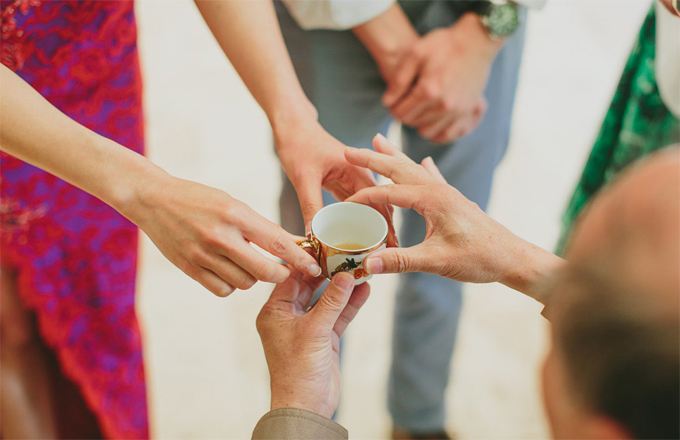
Reception Food
Chinese wedding receptions usually include 9 to 10 courses, each symbolizing long life and prosperity. There is usually a cold appetizer dish of meat, jelly fish, seaweed, and bean curd. Following the cold appetizer is the shark fin soup, which symbolizes wealth.
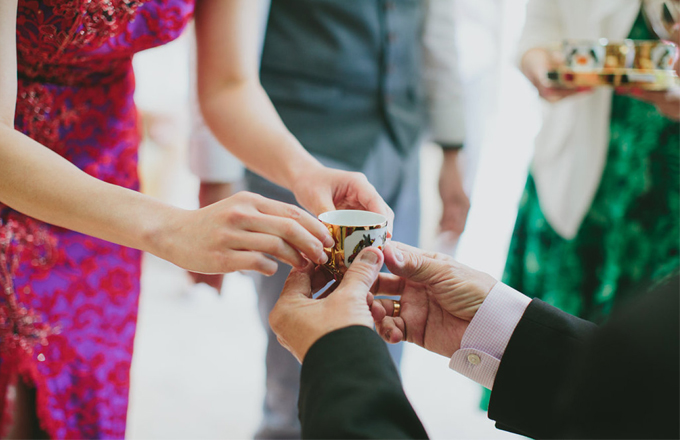
After the appetizers, 8 main courses are served – 8 because the Chinese consider this a lucky number! Main courses usually feature fowl that mate for life (i.e., duck or geese). Chicken and duck are usually served because these two fowls represent the balance between the man and the woman in their new relationship. Other main courses served include lobster, which symbolizes joy and celebration as well as sea cucumber, which symbolizes harmony and absence of conflict between the newlywed couple. Something else that is unique to Chinese wedding receptions occurs after the 5th dish is served. Following the 5th dish, the bride and groom along with their families will approach each table and make a toast to their guests. In this way, the couple is able to speak briefly to their guests and thank them for coming!
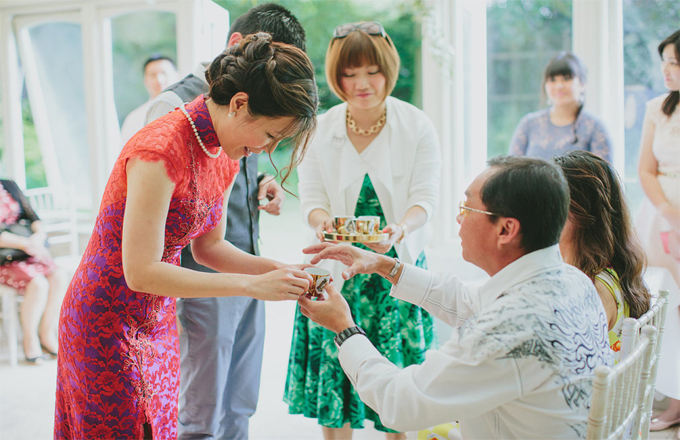
Whether planning on your own or with the help of a wedding planner, when all these elaborate cultural pieces come together, you’ll have yourself a spectacularly colourful day!
*Photo courtesy of Leah Kua, “Suzie & Ryan” Cotswold, England.

No Comments